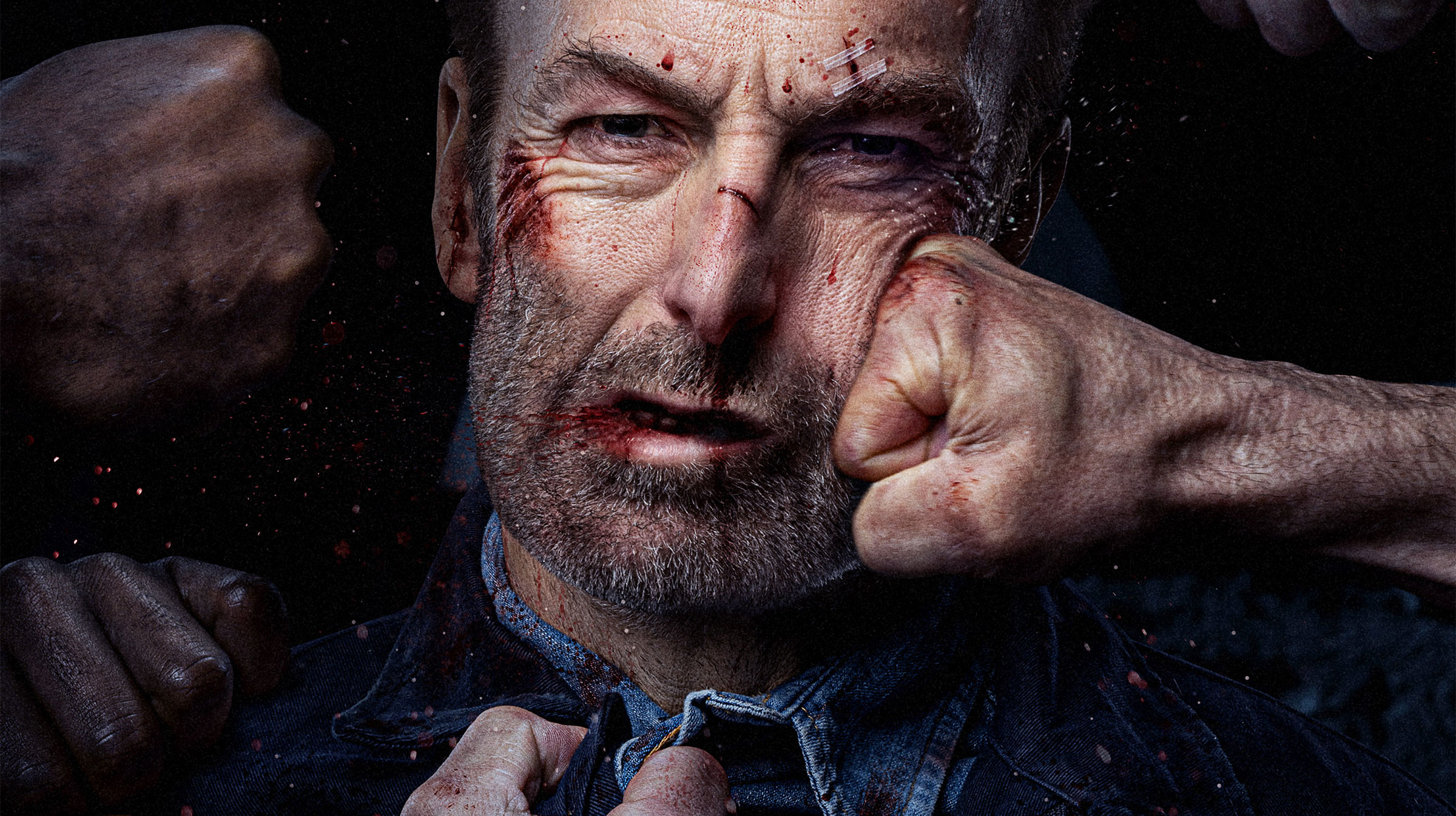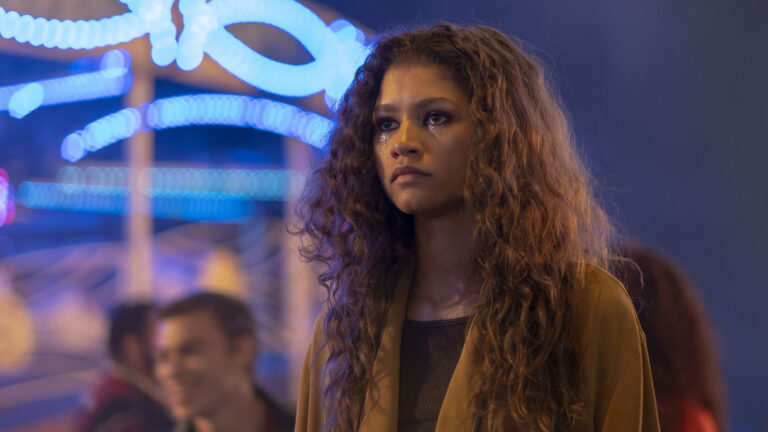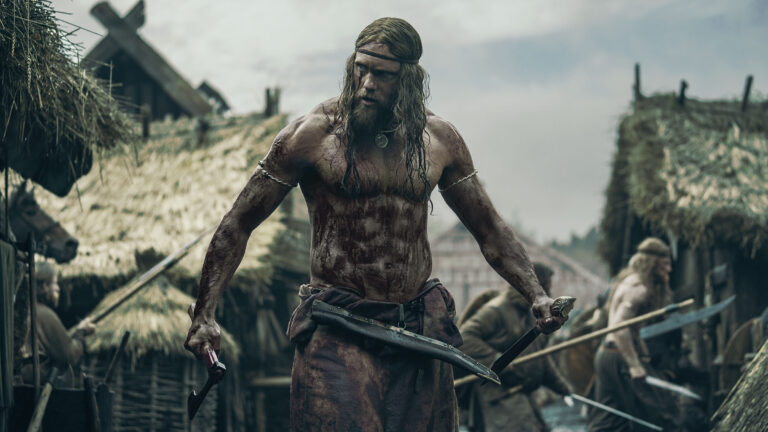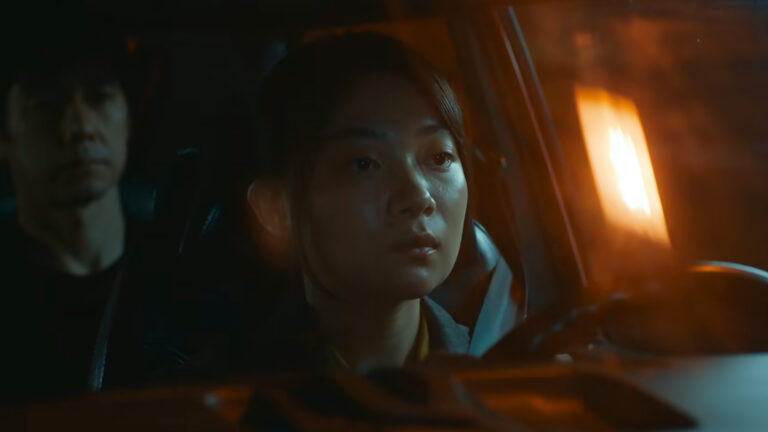Even before he sat down in the film and TV editor’s chair, Evan Schiff had an impressive career as an assistant and VFX editor.
His early projects include The Cat in the Hat, Sky Captain and the World of Tomorrow, Fantastic Four, Pan’s Labyrinth, Rambo, Hellboy, and Star Trek. He also helped craft the animatics that shaped Baby Driver’s more complex sequences.
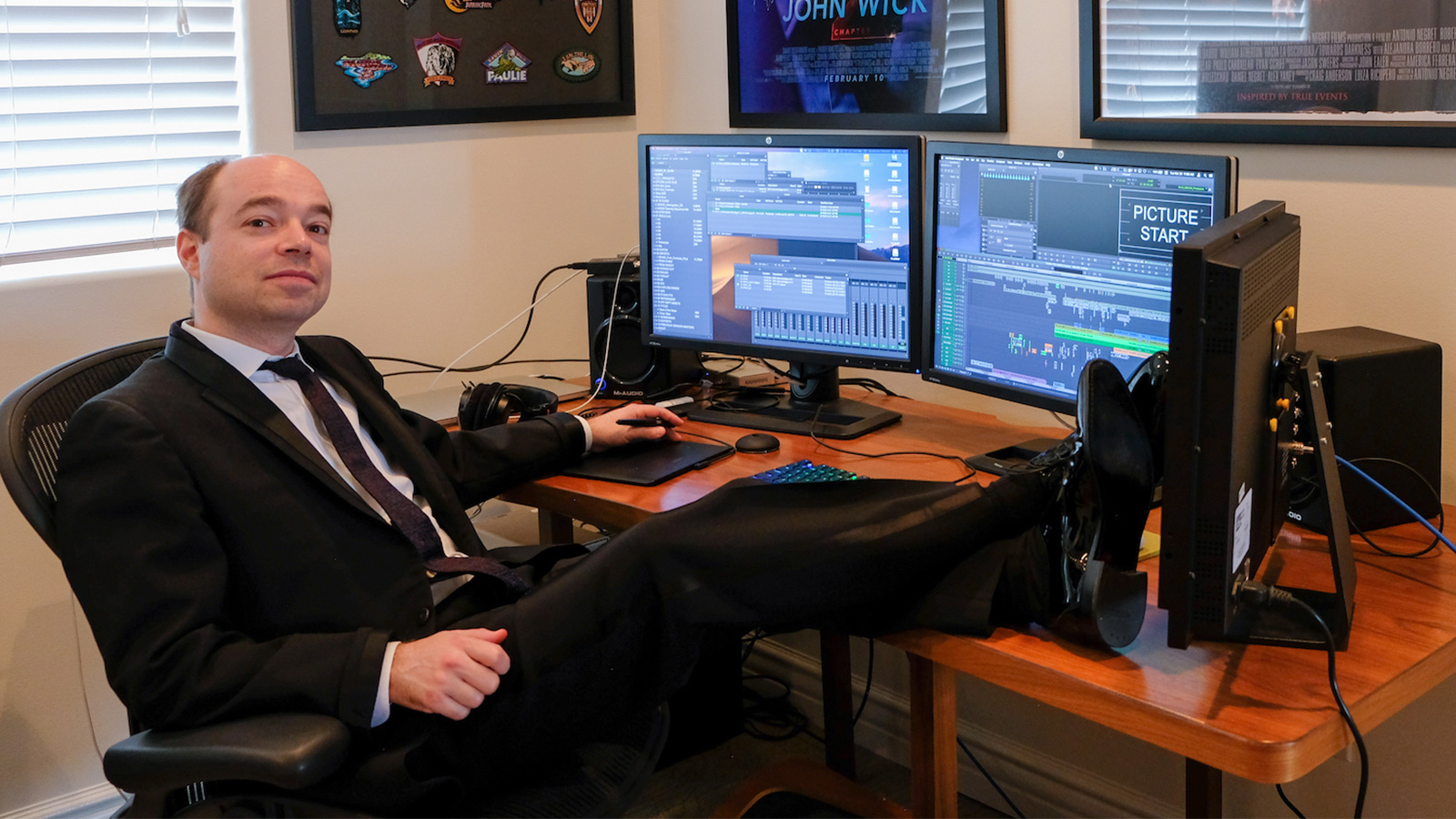
As an editor, he’s cut some big names into shape, including Southside With You, John Wick: Chapter 2 and Chapter 3, and Birds of Prey. He’s also a great follow on Twitter.
In this episode of Art of the Cut, Schiff discusses editing Nobody—the Bob Odenkirk action flick that’s currently finishing up its theatrical rounds before heading to streaming services.
(Warning – mild spoilers ahead, and some profanity in the videos.)
Listen while you read…
HULLFISH: Tell me a little bit about how you came up through the ranks. What was your career path? Who did you assist for?
SCHIFF: I started off at Stan Winston Studio. I did IT for them when I was in college. They started a visual effects company when I was, I think, a sophomore in college, and they needed a visual effects editor. They already had an Avid, but they didn’t have anybody in-house who knew how to use it. So, I volunteered for that. That got me my union qualifying days, and then I had a brief stint as a post-PA and ended up landing an assistant editor job during post-production on Pan’s Labyrinth, under Bernat Vilaplana—he was the editor. I followed Bernat onto Hellboy II, and then I also assisted a lot for Sean Albertson and Paul Harb on Rocky Balboa, a little bit on Rambo, and again on Warrior in 2009. Then I went over to Bad Robot and I was the first assistant on Mission: Possible – Ghost Protocol for Paul Hirsch.
I sort of stayed on and off at Bad Robot for the next few years. I never did another first assistant job over there, but I did some sound mixing—I did a lot of sound mixing, actually—sort of random, whatever they needed. So, I ended up working with Maryann Brandon and Mary Jo Markey. Then I started editing around 2013, 2014.
HULLFISH: What was your first edit job?
SCHIFF: The first union cutting job that I got was on a movie called Everly, which is a Salma Hayek single-location action movie, directed by Joe Lynch, which was awesome and really fun. I’d cut a couple indies before that were great experiences that I’m still proud of, but they didn’t really quite have the same reach as Everly, and they weren’t union. Everly was the movie that allowed me to start cutting full-time and to stop taking assistant jobs.
I was a little over-ambitious, and people were not shy to tell me that.
HULLFISH: What was that transition like for you? Did you think, “Put me in the edit chair. I’m going to do great,” or on that first job did you feel like, “What am I doing here?”
SCHIFF: I was a little over-ambitious, and people were not shy to tell me that, but I started trying to get an agent to try to help me find indie films to cut in 2008 after I finished Hellboy II. I sort of had this feeling that, “I’ve done a big movie as the first assistant editor, and I get it. What’s next?” Obviously that was before I got to Bad Robot and that was a whole other level of movie that I learned a lot from, and I’m really glad that I did.
At the time I was thinking, “Okay, great. So, where do I go from here?” I had a couple of connections to agents at various agencies, and they were very gracious and said, “I have mutual contacts.” So, they did those mutual contacts a favor and they took me out to lunch. I did all these lunches, and at the end of the lunch they’d say, “Okay, great. So, I can’t really help you right now. Get some more experience and come back in a few years.” I think even Paul Hook at ICM—I don’t even think he actually took a lunch with me—he said, “Look, you’re on the right path, but you’re not there yet. Don’t get too antsy. Just keep working hard and then come back when you’re ready.”
HULLFISH: The interesting thing about that, and you kind of were alluding to it, is you didn’t get where you wanted to, but it was probably a good thing because it led to you being at Bad Robot.
SCHIFF: I’m very glad for the time that I got to spend at Bad Robot and everything that I learned there, and the people that I met there in 2008. I guess I would have been 26. So, I was a cocky 26-year-old thinking, “I’ve got this.” I’m glad that people didn’t let me go as fast as I wanted to. I think that I obviously matured as an editor both in terms of the creative part and the political part of having to sit in the chair and manage a director and producers and things like that. I don’t think of it at all as a bad thing that things didn’t move as fast as I initially wanted to. In fact, I think people were right to tell me to slow down a second. I think that was good advice.
HULLFISH: From those agents, I don’t know why they would be saying that—because I’m not an agent—but do you think it’s because they know you need a bigger filmography? Or because they actually know you need to know more about handling a director—you need more creative skills?
It’s that same Catch-22 everybody knows about agents; that you have to have enough work to get an agent, but you need an agent to get the work.
SCHIFF: I think that, for an agent, when you’re interviewing with them, they’re often thinking ahead to “How am I going to sell this person to the producers and directors that I know?” There’s a two-step process. One is they submit a resume for you, and if that resume is thin, you’re not going to even make the next step of having an agent have the opportunity to sell you by phone and really pitch you to somebody. They’re just going to discard the resume. So that’s sort of barrier number one. Then barrier number two is you go on an interview and you don’t have enough experience to back up the job that you’re going for. They’re going to give that feedback to those agents and those agents will stop pitching you for things. So it’s sort of a waste of everybody’s time.
It’s that same Catch-22 everybody knows about agents; that you have to have enough work to get an agent, but you need an agent to get the work. They’ll get a little bit of feedback saying, “Oh, this guy’s not ready.” Then they’ll start dropping you from the projects that they know about because they have a certain amount of asks, and a certain amount of favors and relationships for themselves to maintain. They want to be known as people who are pitching people who are ready to take the job. So, there’s definitely a limit to how much they’re willing to stick their necks out for you. I think if they can tell at a distance that you’re not ready for that or that they’re going to have a very hard time selling you, they’re not going to take you on.
HULLFISH: What do you think was the learning process in-between feeling like you were ready? Being done with Hellboy and cutting John Wick, what were some of the things that you learned or some of the maturity of your skillset that you see between those two periods?
SCHIFF: You could divide it into a couple of areas. First is the practice that I get on my own from projects that I was able to cut in that time. Second would be being able to work for these amazing editors and seeing what they do. Obviously, I would be foolish to think that I didn’t pick up some really invaluable editing advice and perspective from Paul Hirsch, Maryann Brandon, Mary Jo Markey, Sean (Albertson), and Bernat (Vilaplana), and every editor that I’ve had the pleasure of assisting for. As an assistant, you get free access to the experiences that those editors are going through. You see the political situations and how they handle them, you see the editorial problems that they have to solve and how they go about figuring out how to solve them.
Then, at the same time, hopefully you are cutting small projects or indie films or whatever you can get your hands on. So, for me, I cut a lot of DVD featurettes, some for Bad Robot, I did some for Pan’s Labyrinth too, I cut some rip-o-matics, I cut more indie movies… All that experience leads up to ammunition that you’ve got in your back pocket for when future problems arise, and you can say, “Oh, I’ve dealt with this type of thing before. What did I do there? Or what did I see? How did I see Paul Hirsch deal with this type of situation?” So, I think in that time, it was just a matter of trying to be ready for when the opportunity presented itself that I could take advantage of, and then have all of those skills at my disposal to try to make sure that I didn’t fall flat on my face.
Everly was just luck. I was between projects, I went to go have lunch with Sean Albertson at his office, and I ran into Paul Harb. Paul had been offered Everly and was about to turn it down because he was busy on another movie, and I had sort of cajoled him and said, “Hey, I’m right here. You don’t have to just turn it down, you can redirect it.” We parted that day with no firm commitment at all. He was just sort of saying, “Okay. Yeah, maybe. We’ll see.” Then, later that night I got a text message from him that was just saying, “Okay, I sold you to Joe, the director. Don’t screw this up.”
You don’t want to be too aggressive and make people annoyed with you, but if you’re not aggressive enough, then people won’t think of you when the time comes.
HULLFISH: That’s wonderful that he put you up for that, and it also speaks to having the chutzpah to say, “Hey, don’t forget me.” Because you do sometimes need to advocate for yourself.
SCHIFF: Yeah, I think that’s one of the pieces of advice that I try to give up-and-coming editors is to make sure that people know what you want to do. If you’re just toiling away in the background and you’re not being a little bit aggressive, at least about making sure that you are going after opportunities that you know are within your reach, or that people know what you’re looking for so that when an opportunity comes their way, that they think about you. It’s a tricky line to walk because you don’t want to be too aggressive and make people annoyed with you, but if you’re not aggressive enough, then people won’t think of you when the time comes. I probably erred a little bit too much on the side of being too aggressive.
HULLFISH: But look where it got you. So there you go.
SCHIFF: I just sometimes think about this lunch that I had with Guillermo Del Toro near the end of Pan’s Labyrinth when he had secured Hellboy II as the next movie that he was going to do. We knew the timeline. We knew that it was going to be entirely overseas, post included, and that Bernard was going to cut it. I just remember flat-out telling him during a lunch, I said, “Hey, I’d love to do Hellboy II with you. Can I do Hellboy II with you?” These days I probably would still make it known, but in a little bit more diplomatic way. He sort of froze for a second and said something like, ” Um, okay. We’ll see.” Then, months of silence after we finished Pan’s Labyrinth followed by an email from Guillermo to the post-supervisors saying, “Here’s my editor. Here’s my first assistant editor.” Which I didn’t really realize how rare that was at the time for a director to be saying, “This is the first that you’re going to hire and here’s the sound editor.” He basically carried the three of us from Pan’s Labyrinth on to Hellboy II.
It was worth it, but it was a little bit of an awkward moment at that lunch. Normally, the normal route would be that you would go through the editor to even ask for the first assistant job. That movie was a little bit different just because it was a foreign indie movie with a foreign editor. So, Bernat went back home to Spain while we were finishing the VFX. Then, it was just me and Guillermo in Los Angeles dealing with VFX. So, I had a lot of one-on-one time when Bernat was an entire continent away and I got to know him a little bit better and felt more comfortable saying, “Hey, I want to do this movie with you.” Obviously, it’s completely dependent on Bernat approving that also, but he wasn’t there at that lunch for me to ask him.
HULLFISH: Often on films edited overseas, the production is forced to use local assistants.
SCHIFF: Yeah, one of the VFX editors came into my office early in post and asked, “So, why are you here?” Because we were posting in London and obviously there’s no shortage of very talented people in London, and I said, “I think I’m here because I know Guillermo from Pan’s Labyrinth and I speak Spanish.” I think those are my qualifications for this job.
HULLFISH: I have had numerous conversations with editors, and it’s almost split down the middle, half of them say, “I better not ever hear from an assistant that they want to cut. That’s for me to decide. They should just shut up and wait until I tell them.” The other half say, “Of course you’ve got to ask, because, otherwise, how do I know whether you want to cut or not?”
SCHIFF: Yeah.
HULLFISH: There are assistants that spend their entire lives being assistants because that’s what they want to do.
SCHIFF: Right, and that’s why I think you need to tell people vocally what you want to do. I like being an assistant also. I totally get and understand and would happily make a career of being an assistant. I think it’s important to let people know what your expectations are and if those are your expectations, great. If you want to cut, great. If I know you aren’t particularly interested in cutting but you really like all the workflow stuff, I won’t toss scenes your way if that’s not something that you’re interested in doing; but if that is something you’re interested in doing, then I’m certainly happy to have the assistant editors that work with me take a stab at whatever scenes they want to cut, or if I get overwhelmed with dailies oftentimes I’ll just say, “I need help. Here, you take this. You take that.” I find that useful, but I wouldn’t force that on somebody that doesn’t want to do it.
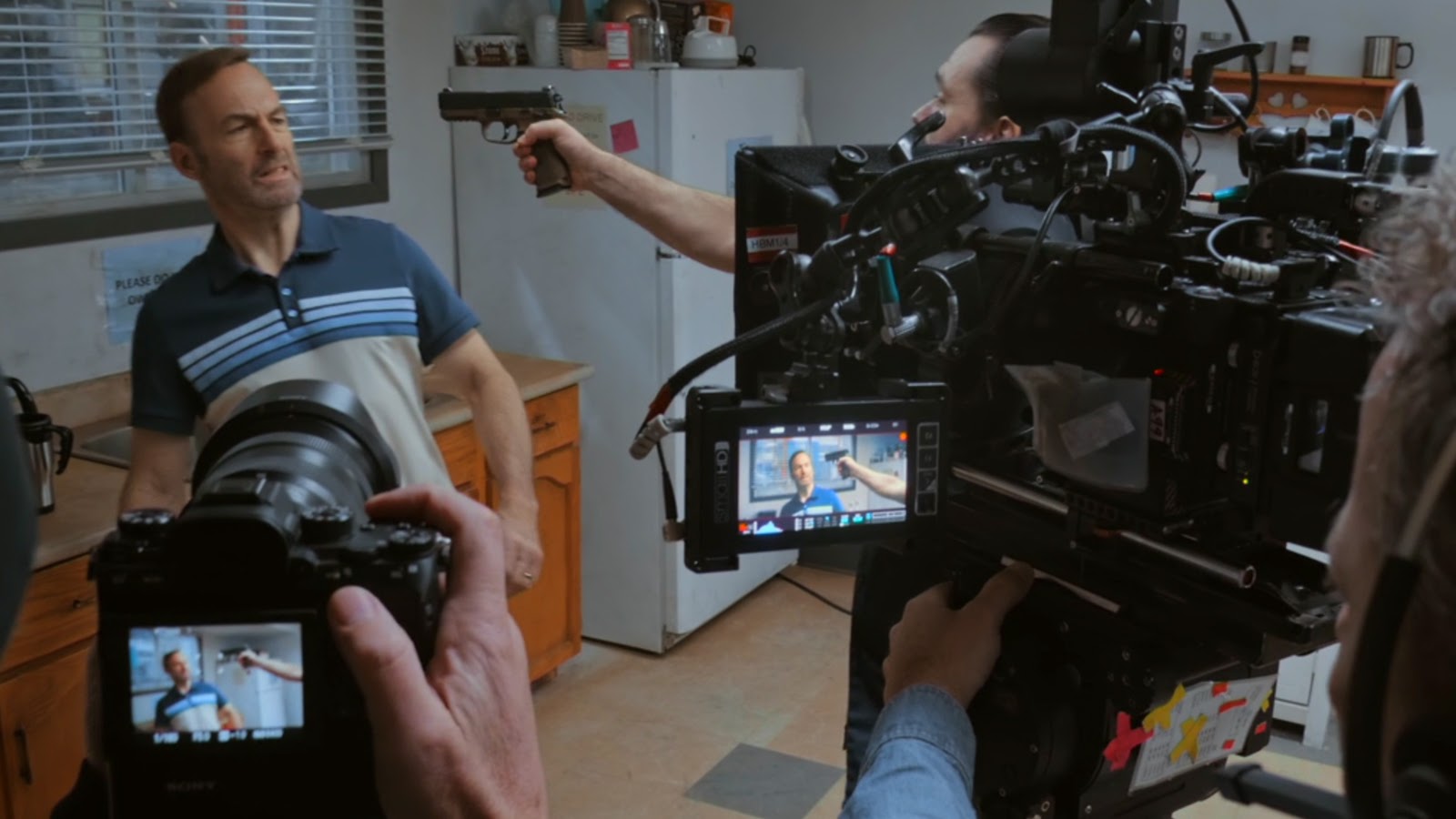
HULLFISH: Two places that I really enjoyed the intercutting is Bob Odenkirk’s character, Hutch, he was listening to a radio, and then I believe that’s intercut with him going to his dad’s place. Was that designed to be intercut or did you have a bunch of scenes and you said, “We could speed things along?”
SCHIFF: I don’t think that was originally designed to be intercut. William, the co-editor on the movie, was the one that’s really responsible for that particular intercut. As we needed to address pace, try to get things faster, and cut out some beats that were confusing, that section got even more shortened than it had been. I think that was originally a radio conversation, then Hutch goes home, and then he goes back out. Part of the structure that we ended up simplifying was there was a lot of: he goes home, then he goes out, then he comes home again and he goes out. There was a little too much travel. It made more sense for him to talk with RZA, then get on the bus, go to his dad’s, and then go home, and then get the ID and the gun.
HULLFISH: There’s another one that is also similar to that which was the barbershop intercutting. Can you talk about that intercutting?
SCHIFF: So, that was a scene that was much later in the movie. We were tackling a few problems. One is that we felt like we needed to establish earlier: who is Yulian? How bad is he? What are the stakes here? We wanted to get that upfront earlier, and couching that in the barber shop voiceover and pairing that actually with seeing Yulian and seeing them searching for Hutch at the same time, that accomplished a lot of the goals that we were trying to do.
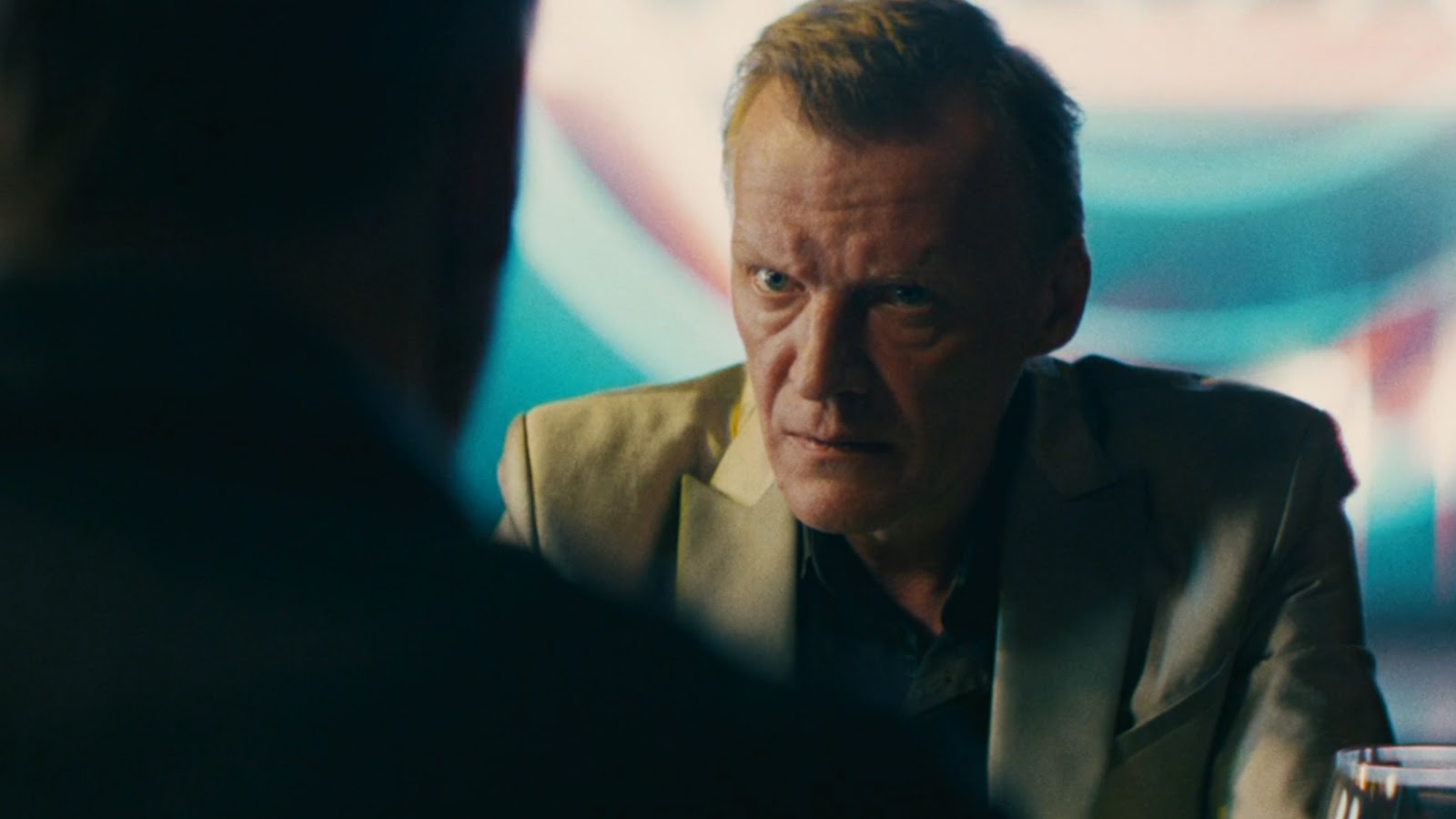
It also allowed us to cut out some of the more John Wick-y stuff that existed in the original script and in the assembly, but we made a conscious effort really to make this its own thing. There were already a lot of similarities to John Wick in that it’s Russians and a guy who was retired and coming back. So, there were things that got more into the underworld. Hutch at one point gets these stamps and you realize that the stamps are the currency of this underworld that he used to be a part of, and there’s a talk where the guy in the barbershop tells Hutch that now that he has made himself known as being back in the game that his debts are going to come due again. He owes a debt to an unnamed figure that you never see, and it just got too close to Wick. It got too complicated because you never see that guy. There’s no payoff for that. There would be a lot of setup of this debt, but there would be no payoff even in setting up a potential sequel if there was one.
For that stuff, we felt like it all had to go, and it was much easier to just focus on the fact that Hutch doesn’t know what he’s just done and whose kid he’s just attacked. This was a very convenient way for us to introduce Yulian and the threat that he poses as well as clue you into that in real time as Hutch is figuring out who Yulian is, Yulian is figuring out who Hutch is.
HULLFISH: This is a movie that just flies through. It’s 90 minutes long. It is not a long movie at all. The beginning of it starts with this montage of this guy’s daily life. Tell me a little bit about that sequence and introducing people to his life.
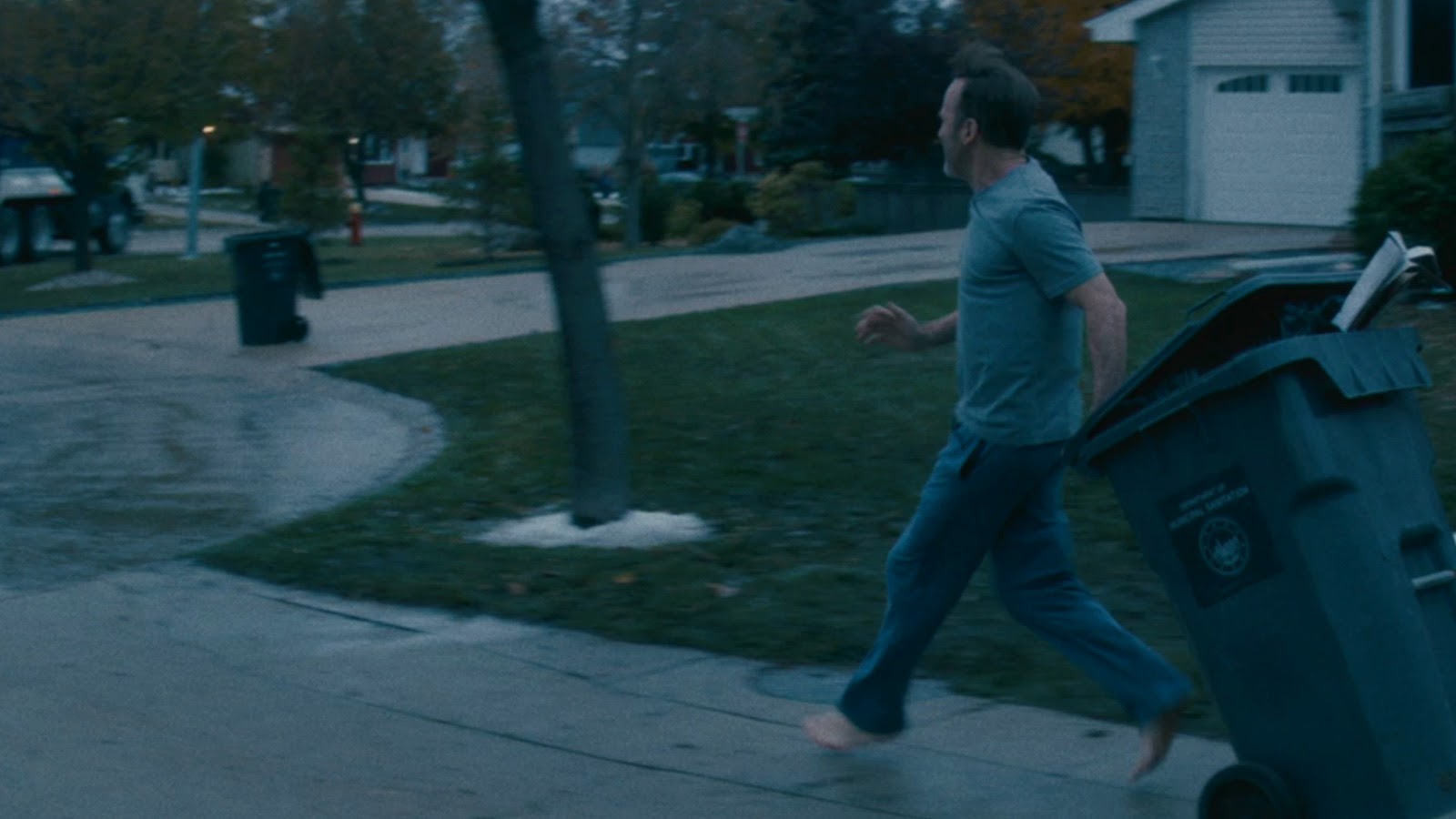
SCHIFF: The issue with this was actually we needed a little bit more setup right off the bat. We needed to clearly establish that this is a guy who is living a humdrum, very routine life. Everything is repetitive. He’s bored with it. His wife is bored with it. They’re bored with him. His kids don’t respect him. It allows an opening for you to relate to the character of Hutch because everybody, at some point, gets settled into their routines. I’d say even particularly during this past year of the pandemic where we’ve all been living at home, you just start to realize what your routines really are. So, that montage was entirely created out of recycled material. It’s why he’s wearing the same shirt all the time. We just started using different takes. Some of it we took from later on in the movie.
What if we don’t try to do a montage to a song and it’s just all sound effects?
Dave Leitch was the one that actually really had the idea of, “What if we just see him literally day after day?” Then, I had to go figure out, “What does this actually look like?” So, we tried a couple different things, one of which ended up in the movie which was what if we don’t try to do a montage to a song and it’s just all sound effects? This is where it’s really important that your home system is in sync when you’re trying to cut very rhythmic sound effects, because if you’re even a frame off, it throws everything into chaos. So, I did a version like that with the sound effects, and then Mark Stoeckinger, from the Formosa Group, helped me do a first sound pass with some more.
I have a decent sound library, but I didn’t have the sort of sharpness that I needed, and for that type of montage you really need sharp sounds. Mark helped me with that. Then, I did another version that I also think works equally as well with a song called “Humdrum Blues,” but the issue with that is then there’d be a song in the opening and then a song for this montage, the days of the week montage, because he’s in the interrogation room first. So, that felt weird to do song and then song, and the two songs would be radically different from each other. So, we ended up sticking with the sound effects version, which I think is the better version.
Over the course of the edit, we added some days. We figured out what day the movie would have to be set in. So, then I had to add a couple of extra days to the montage. We wanted to make sure it didn’t get too repetitive for the audience. It follows a traditional structure for this type of thing where the first week is longer, the next week is shorter, and then the pace of the weeks accelerate. So, then I ended up taking the whole thing and scrunching it down. Rather than starting medium and ending fast, it started fast and ended super fast. It needed to build and add some tension because then when it ends, you’re at the break-in.
By the time that the montage ended, there had to be a sharp contrast that we could make between this routine and the break of the routine. So, making sure that in the first week you established this is a montage of this guy’s daily life, and then by the pace of itself by the end of the montage, it’s not even that important that you’re seeing the individual moments because you’ve seen bits and pieces of them earlier in the montage. At that point, the pace takes over and provides the tension that we need in order to lead into the housebreaking.
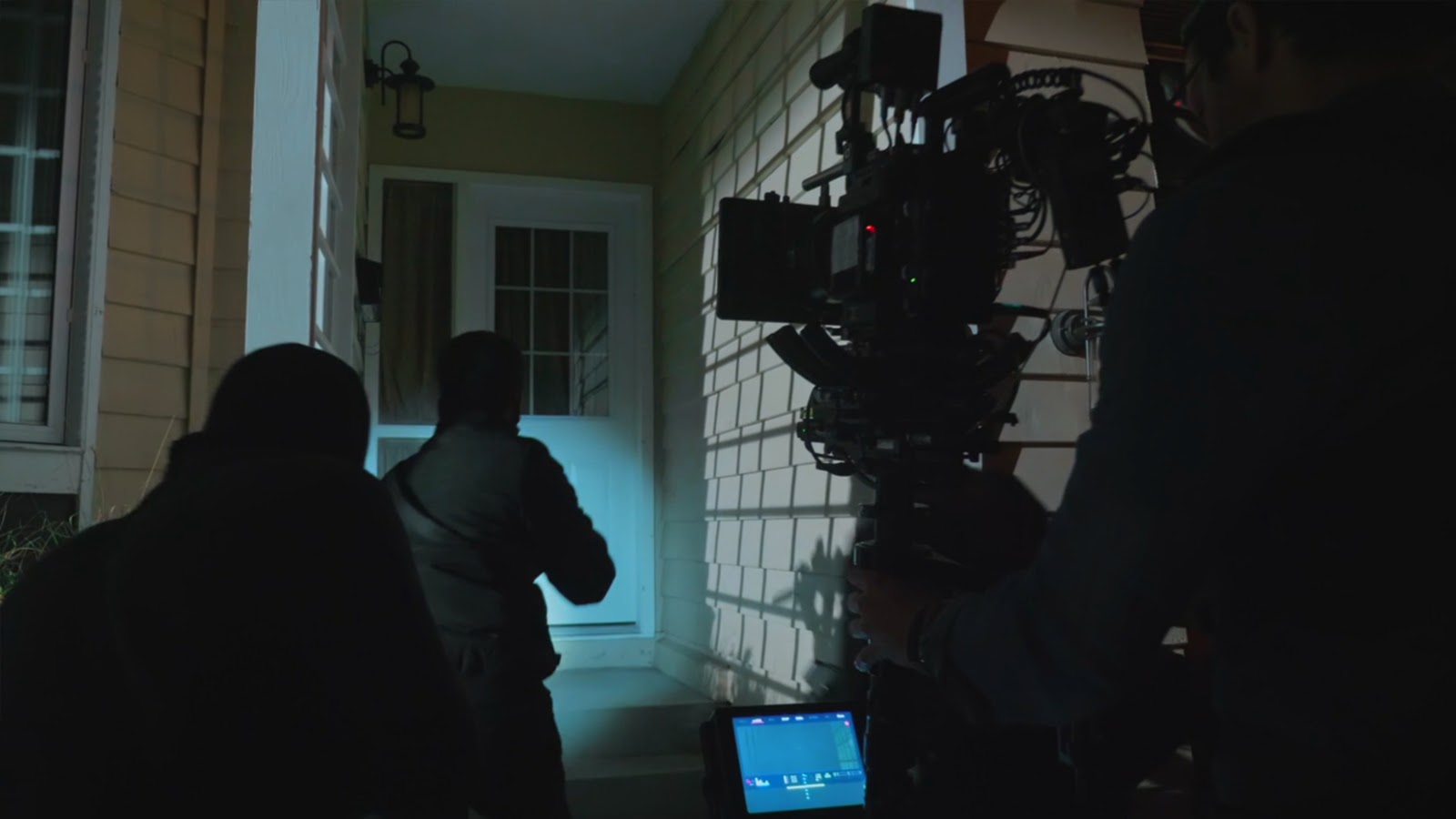
HULLFISH: Were there issues or discussions about how much you felt you could trim other stuff like the relationship with the family, the relationship with the wife, the setup of the guy in the Russian mob?
SCHIFF: Yeah. We always wanted to make sure that Becca, Connie Nielsen’s character, was present, had agency, and was not a damsel in distress. We also played a lot with what their backstory is, although we never get specifically into it. She does not have the reaction you would anticipate when he comes home from the bus and steps into the light and is all bruised and cut, and he said, “I had a rough day,” and she says, “I can see that.” It’s not the reaction you anticipate. So, you start to wonder, “What was their life when they met?”

We played with variations where we were a little bit more explicit about if she knew about his previous life or not. We had a version where she did know, and then we decided that was a little too on the nose. There’s a photo in the movie where you see them in good times in Hawaii with leis around their neck, and we change this photo to them in some desert country somewhere, obviously on an adventure. That was a little too much.
We definitely looked at, “What’s the right amount of setup for their relationship that we need?” Then, when she takes the kids and leaves, we wanted that to be a moment of tension for them and not just her saying, “Yeah, I’m going to get out of here. You do your thing.” There had to be some relationship tension. There had to be the tension of: “What have you gotten us into? And have you put us all in danger without us even knowing it?” I think by the end of the movie, when they’re looking at the new house, obviously you realize they must have sorted this out and she must be okay with this life that he had hidden from her.
Then with Yulian, again, the Goodfellas intro that he gets in going through the club, it was tricky to make sure that you realize that he was somebody who could turn on a dime and who was a threat. If the first thing you see of him is him goofily singing off key, it’s a fun intro but it also presents a problem for us like it’s working against us in a little way. I think that’s why in the scene right after that, he proves a point by killing one of the guys who’s a stakeholder in the Obtshak.
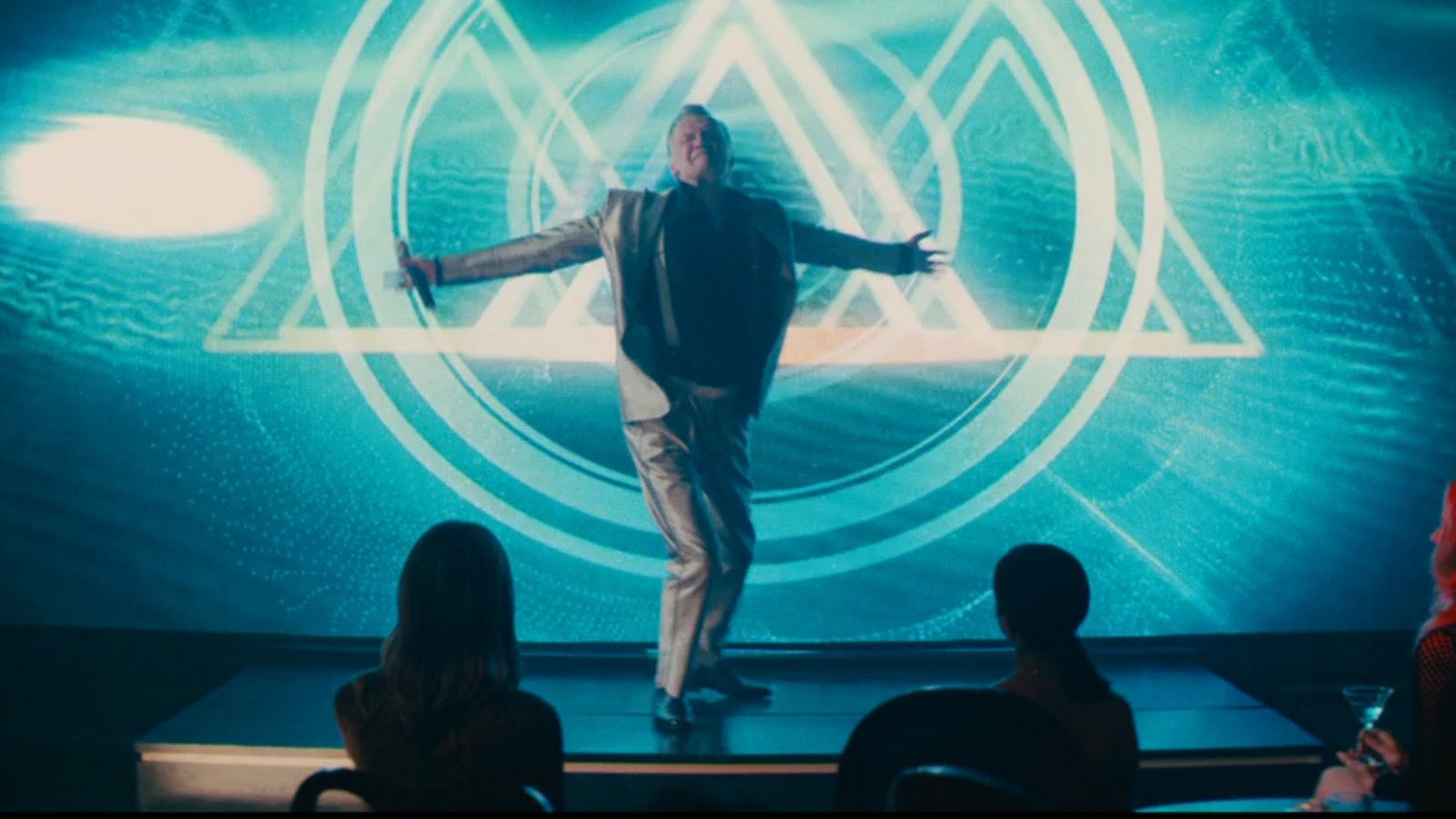
Even with that, we felt like we weren’t quite there in terms of saying, “This is our bad guy.” Like I was saying before, that’s why the barbershop montage exists in part. It’s to give Yulian a little bit more serious of a backstory. There was some goofy stuff that was in there too of him practicing his dancing in his private office with the paintings and things like that. We were just thinking, “We can’t… That’s got to go.”
HULLFISH: I’m kinda glad that’s gone actually. I think there’s nothing wrong with letting an audience figure things out after the fact. As they explain in the movie as the Russian 401k, that’s not really explained explicitly up at the top, but you get to understand it as you go. Was that explained earlier and it got cut out?
SCHIFF: Not really. The explanation that’s in the movie is pretty much what was there. A lot of that barbershop voiceover is a voiceover that we wrote to try to clarify in a way. Obviously, I think 401k is a particularly American metaphor, but if you understand that these guys have all pitched into a giant pile of actual cash and that it’s a roving pile of cash that needs to be guarded, as long as you understand that I think you’re okay.
It needed to feel like it was not cutty so you understood that this is a guy who is giving hits and taking hits in the same shot.
HULLFISH: Obviously, with this movie and with the previous work you’ve done on John Wick, there’s a lot of fight scenes. Somebody just referenced today our previous conversation about Wick where you said, “We try to stay on wide shots so you can see that it’s real.” Was that something that followed through on this? I heard a lot about how much time Bob spent preparing for this role.
SCHIFF: Yeah, we definitely want you to know that this is Bob fighting, particularly in the bus fight. Really in all the fights, but the bus fight is the first big fight of the film. It wasn’t cut exactly like John Wick because, for one it’s in a bus and so I can’t really stay wide, but that fight needed to feel brutal. It needed to feel like it was not cutty so you understood that this is a guy who is giving hits and taking hits in the same shot. It was a great show-off piece for Bob because it was so well staged, so well choreographed.
There were a couple moments in the bus fight where I cut them and I said, “Okay, there’s a stab wound here,” and Ilya said, “No, no. Yes, there’s a stab wound here, but the blade goes through the guy’s leg and you see it out the backside.” It’s sort of like there were conceptual moments where Ilya says, “These are places where I’m going to really highlight that this is a brutal fight.”
Even just cutting the dailies, it started at a level of: this fight is fun and gritty and real, and then Ilya had these little tricks up his sleeve that weren’t immediately obvious from the dailies that when we got into it he would say, “No, actually this is where I want this knife. This is how I want this to slash and where I want this blood, and actually he gets hit on the head over here.”
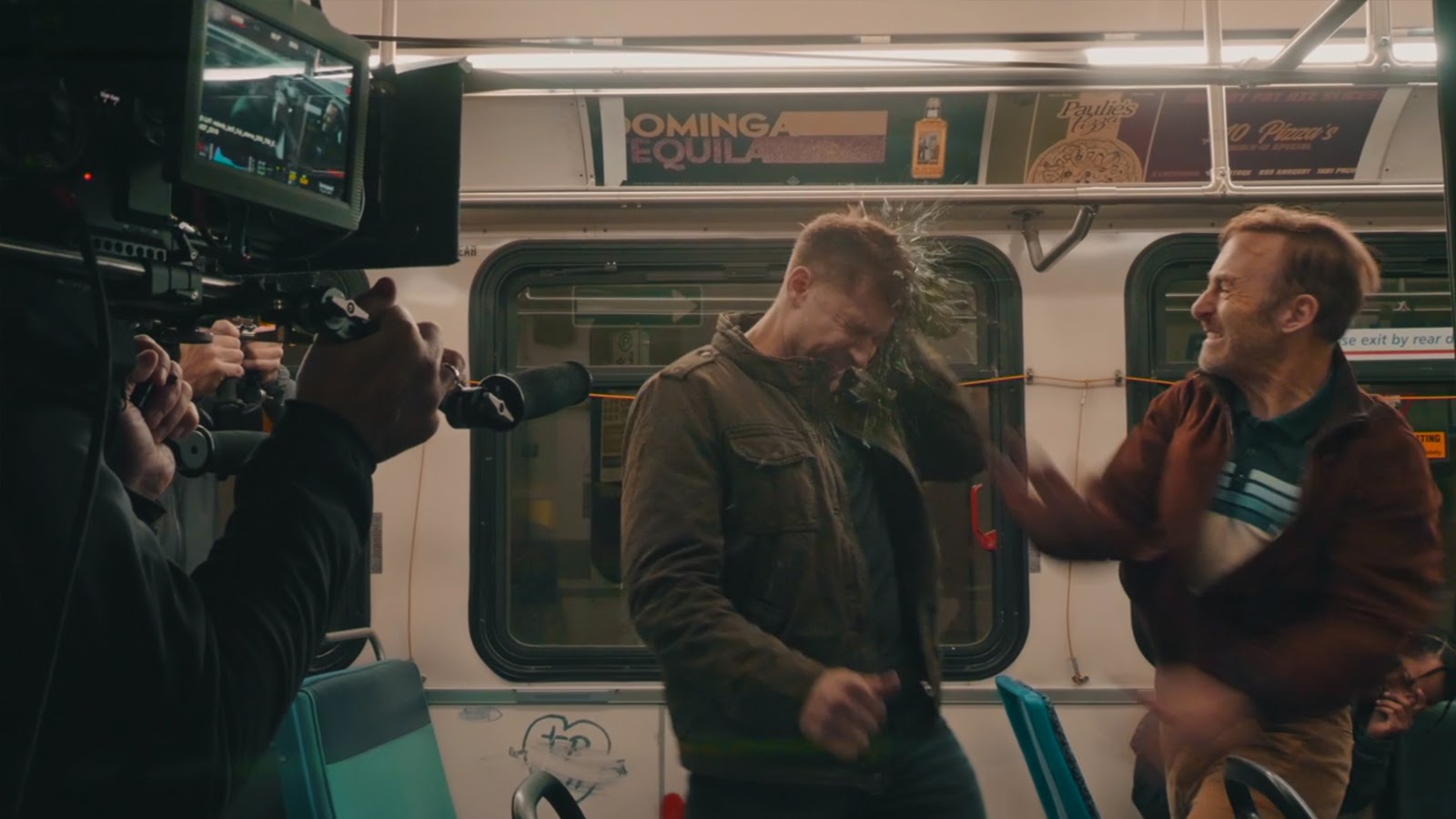
There were some moments that he had kept a little closer to his chest, that when we put those in they really amped the level of the bus fight up. Then, I’ve just loved that he also gets thrown out of the bus and you’re thinking, “This fight is over,” and he’s going, “No, no. Hold on a sec. I got to go back in.” Then from that, it’s not exactly a oner, but it sort of feels like a oner in the second part of the fight, which I think was a cool stylistic choice now that we’ve established that this guy can fight. That’s really where we get more into the sort of John Wick style of choreography.
HULLFISH: You mentioned how brutal that fight is. And it made me think of the famous Thelma Schoonmaker quote when she’s asked, “Aren’t you offended about how brutal Martin’s movies are?” And she says, “They’re only violent when I get done editing them.”
SCHIFF: Right. Yes. That is true [laughs].
HULLFISH: That’s very true. That’s one of those things that the violence of something can be amplified by those brutal cuts, right? Can you talk about making those decisions? Because you’re trying to balance, “I don’t want to cut so we see that it’s real, but I do want to cut because I can amplify the action or the violence.”
SCHIFF: You have to ask yourself, when you’re cutting a scene like that, at every point that you’re making a cut, “Is this necessary?” Because every time you cut, it takes your brain and your eyes a little bit of time to readjust to whatever the new frame is that you’re cutting to. So, there was a way I could have cut that where it would have been really frenetic, but you wouldn’t have seen anything. You wouldn’t have come out of that fight thinking, “Oh, that was brutal.” It might’ve still made you think, “Okay, it was a fight. A bunch of exciting things happen,” but you feel the hits that Hutch takes in that fight. The more edits you add to that sequence, the less you get that feeling in my opinion.
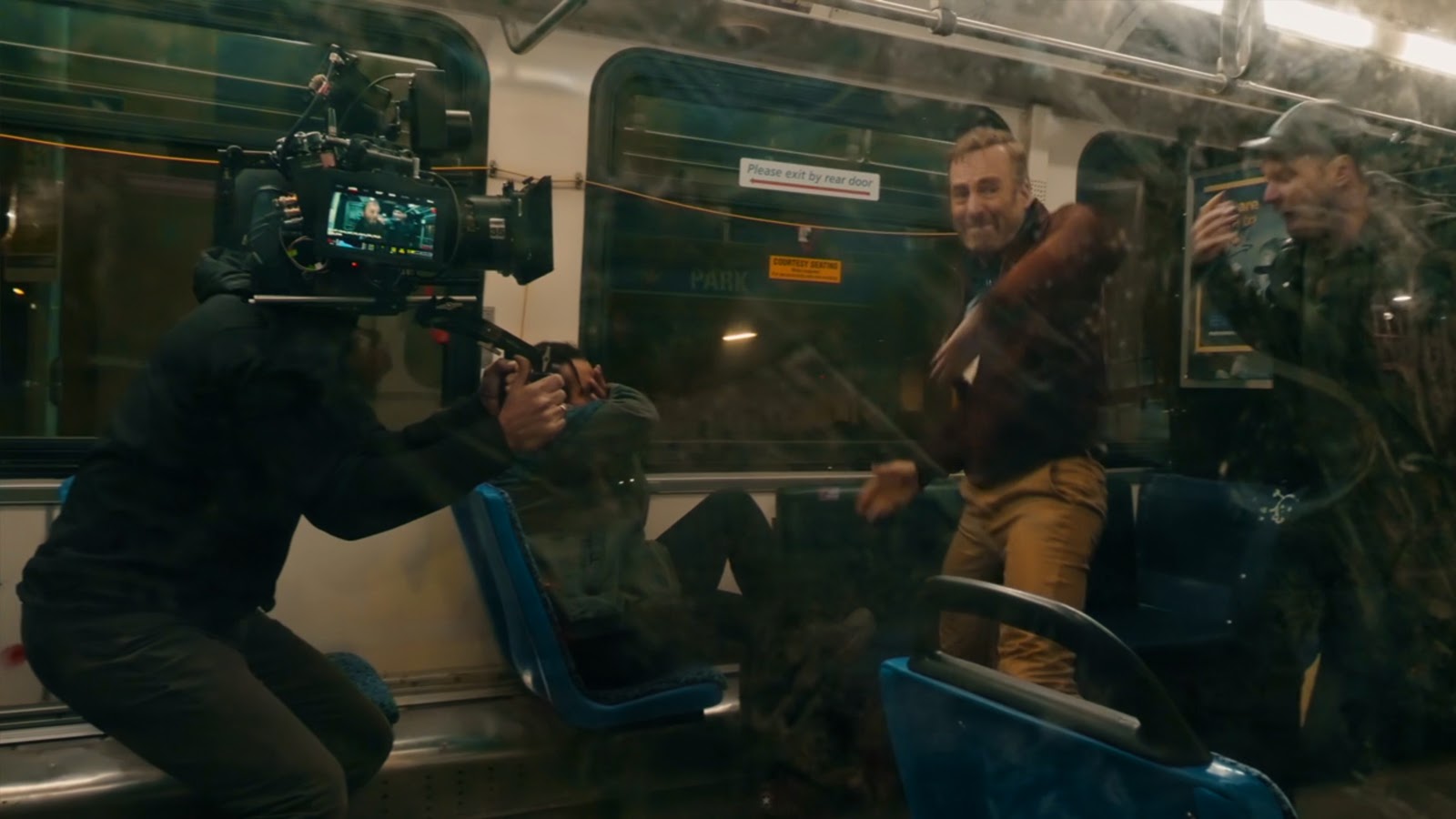
For me, I’m always trying to figure out, “What is the best angle to see this fight from?” Then, sometimes it’s not a purity test. If I can add a cut in a place that isn’t technically necessary but amps up the energy level of the fight and the brutality of the fight, I will completely do that. You just have to take stock of the dailies that you have and what you can do with them.
HULLFISH: Do you have a different approach when you’re taking on a scene that’s like the scene of Hutch making lasagna, which is a nice family moment? Obviously, the editing is different between a fight scene, but is your approach to developing the scene different between an action scene and a typical dramatic scene.
There’s a moment when I say, “I’m done with this shot. I want to be somewhere else.” It’s hard to describe. It’s just intuition.
SCHIFF: Yeah, like a dialogue scene is a lot more open-ended than an action scene. The action scenes are usually very tightly choreographed, so I don’t actually have as many choices in terms of where and when I can cut. As for a dialogue scene, I can choose, “Do I want to live in the master? When do I want to go into coverage? Am I interested in seeing characters say their lines, or am I interested in seeing people react to other characters saying their lines in the scene?” For me, I don’t have a great answer to that because I feel like a lot of it is intuition.
With a dialogue scene what I find myself doing, after watching through all the dailies, is feeling the take as I’m going along, and there’s a moment when I say, “I’m done with this shot. I want to be somewhere else.” It’s hard to describe. It’s just intuition. Usually, the approach that I would take for a dialogue scene is assembling it on the fly without any preconceived notions of exactly where and when I want to cut. There’s a little bit of that process of figuring out what works and what doesn’t work as you’re going through, but if you have good footage, it speaks to you even as you’re watching just the raw dailies.
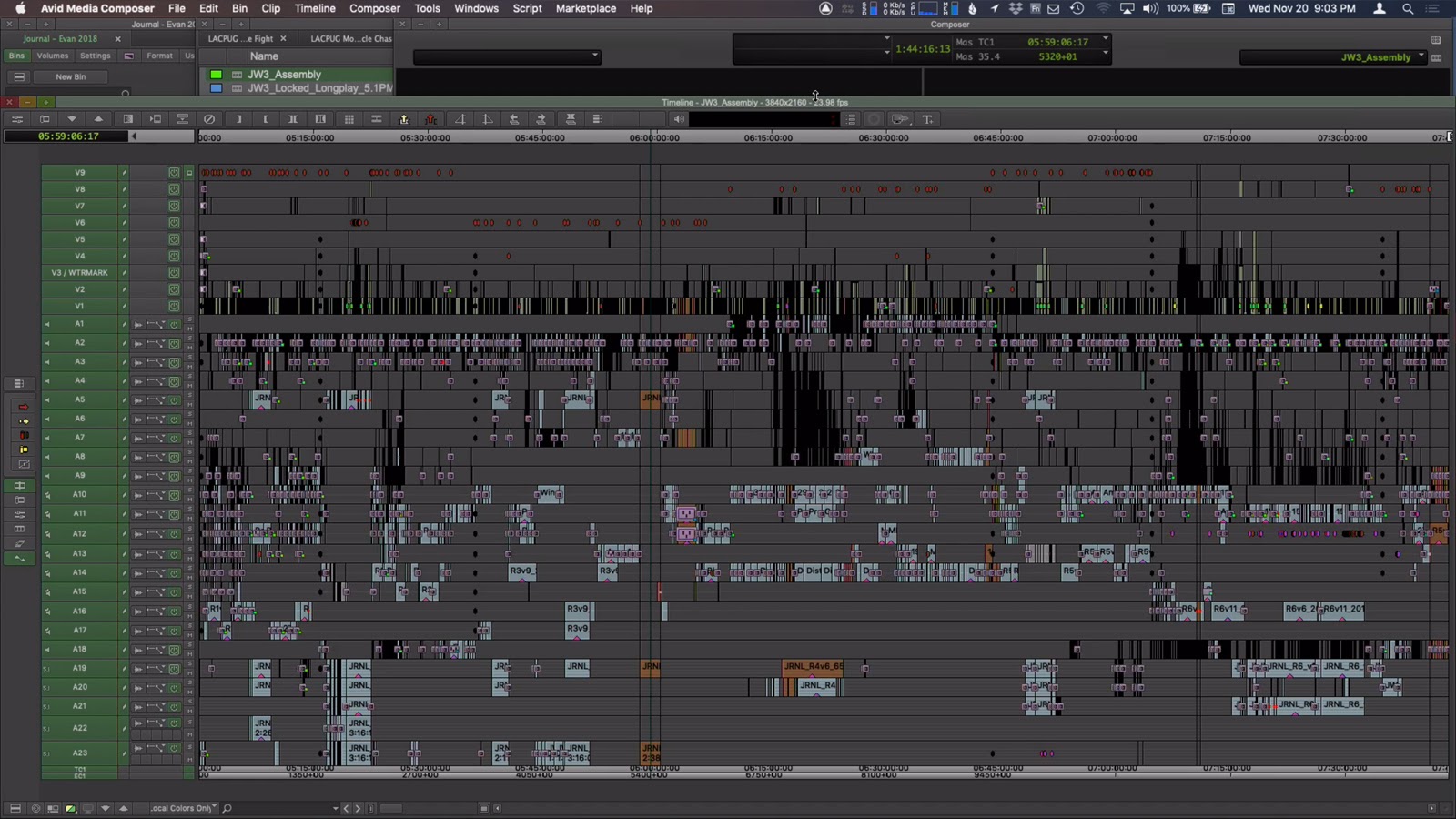
Like in John Wick: Chapter 3, in the knife fight there’s a 17-second take of John dodging two guys with hatchets. I can watch just the dailies they shot for that whole day and think, “I know I’m going to be in this shot for as long as I can possibly hold it, and I’ll just figure out where I need to get in and out from the other angle.”
HULLFISH: Going back, even before the editing, do you do anything different or do you always do the same thing to prep the editing? In other words, do you always do selects reels? Do you never do selects reels?
SCHIFF: I make a lot of mental notes and sometimes some paper notes as I’m watching through dailies no matter what I’m cutting. For larger action scenes, I do like them to be divided up. I like to make bins for pretty small chunks of them. In the mirror room in John Wick: Chapter 2, I think we had at least a dozen bins for all these different moments, and you open them and there’s only two or three setups in them; but I like when I open a bin to not be presented with the entire fight from start to finish, especially because they normally segment them out as part of the choreography anyway. I don’t mind opening a bunch of bins if I have to go back later and address the thing as a sequence, but when I’m cutting it together for the first time, it’s nice to give yourself these little wins of, “This is a small little chunk I’m going to cut now, and then I’m going to get close this bin and file it away because I’ve taken care of it, and I’m going to go to the next one.” It gives you this little sense of accomplishment that keeps you going.
I guess I have little tricks that I use for montages or music video type scenes that come up, but generally, I would say my approach is the same for a dialogue scene or an action scene, which is just watch it and see what I have and then feel my way from there.
HULLFISH: Can you talk a little bit about music, how those things were found or chosen and trying to deal with editing to music cuts?
SCHIFF: The final soundtrack was mostly actually Dave getting together with the music editor, Ilya, and the music executives at Universal. They tried a bunch of things that I wasn’t even aware of. We were still editorially dealing with montages that I was able to do with score and temp score. So, as we got towards the end of our schedule and we were in a little bit of crunch time to make our dates and everything, I actually didn’t have a whole lot to do with finding the finished needle drops that they were going through; that tended to be Dave, Ilya, and the music editor. Then, we would drop them in and I would adjust a cut or something if I needed to. Ilya had a few points in the heartbreaker car chase, which was always there, actually. That’s one of the cues that never changed, but as the edit changed around that, we sometimes had to either recut the song or recut the edit a little bit because there were particular moments where he wanted the song to hit a particular car crash. If those had gotten out of alignment as a result of other things that we were doing, then we would have to go bring them back.
If you watch any of Dave Leitch’s movies, the music is very important to what he does, so he had a lot of opinions on that. Between him and Ilya, I just said, “You guys seem like you have this handled. I’m not going to insert myself too much in this.” If there’s something that comes my way that I think doesn’t work, I will obviously speak up, but for the most part, they had it handled.
HULLFISH: Can you talk to the way sound effects change the pace or the rhythm of a scene?
SCHIFF: The heartbreaker car chase at the end is a good example of that. I think that car chase was supposed to be longer and they ran out of shoot days and so there was a little bit of a concern about, “Is this exciting enough with the music and with Mark Stoeckinger’s sound effects and sound edit?” That really allowed us to amp up the energy and make sure that it felt like these guys were shooting just a thousand rounds at Hutch while he’s trying to ram his car into them, escape them, and sort of lead them in a direction at the same time.
You try to preempt as you’re cutting what you think the sound and the music will end up doing as you’re trying to figure out your own pacing, but inevitably you get visual effects in and something takes a longer or shorter time, or you get sound effects in and you realize the VFX need to be adjusted. We spent a lot of time on muzzle flashes asking, “Should a muzzle flash be one frame or two frames, or sometimes three frames?” On John Wick, we usually do two-frame muzzle flashes, but sometimes if you’ve got an automatic weapon, a single-frame muzzle flash is enough, and two frames starts to look too slow. As you get those types of effects in, you also have to rethink, “Am I cutting at the right spot?” We were just constantly reassessing once we had a preview mix and sometimes VFX. Are edits still in the right places? Can we tighten this up in a way? Does it sound like the danger is building for Hutch as he’s driving. Is there something anemic that we need to excise?”
HULLFISH: So, do you think we’ll finally get a book that’s a response to Walter Murch’s In the Blink of an Eye, where it’s when you cut, compared to a blink, that for you it’s muzzle flashes?
SCHIFF: Maybe [laughs].
I cut the whole thing from home from that point on.
HULLFISH: Tell me a little bit about cutting remotely, and what technologies were you using? How are you collaborating with the director if you were editing at home?
SCHIFF: So, William started the film from the beginning and I came on during post. When I came on, it was right when the lockdown started. I had two days in an office in Studio City, which was really just copying a hard drive. Then, I cut the whole thing from home from that point on. I had a system at home already. The assistant editors and William were up in Vancouver and so we just Aspera’d things back and forth. We’d Aspera bins, media, renders, and music back and forth, and the same with the music editor. It worked. The biggest issue that we had was actually I had the fastest internet connection among everybody. I had fiber in my apartment, and then I moved in May to a house that did not have fiber. So, then I went from having the fastest internet connection to having the slowest. While I had the fiber, sometimes I would do turnovers because it was just easier and faster for me to render a quicktime and send it on its way than it was for the guys in Vancouver, who were also working from home, to send things at whatever slower upload speed that they had.
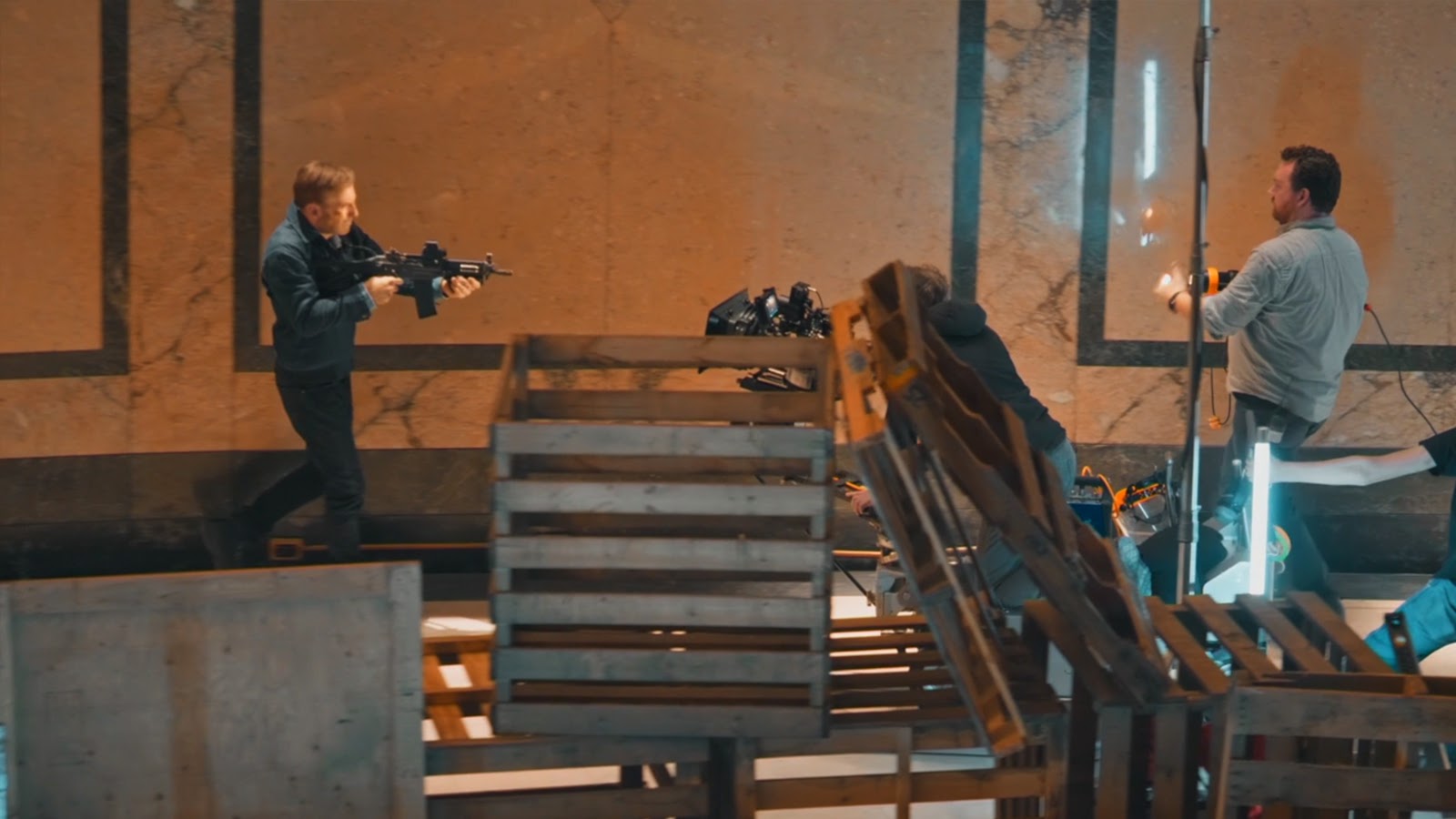
HULLFISH: Aspera is a service that gives you faster upload and download speeds. But what were you actually using to collaborate?
SCHIFF: Universal has their own media asset management system. I’m waiting for the day when a major studio allows me to use Frame.io. I know it’s going to happen. It hasn’t happened yet, but Universal had their own system and so we would use that.
HULLFISH: Why are you looking forward to that day?
SCHIFF: For a couple reasons. One, that Frame.io is just super fast. I could saturate my gigabit internet pipeline to Frame.io every time I uploaded, which is just amazing. Most of the studios don’t let you do that; they’ll cap you. Then, second is their interface for collaboration is better than all of these content asset managers that the studios have. They’re not specifically designed for video. They do allow you to send video and display it, but they’re made for hosting everything: PDFs, JPEGs, QuickTimes, Excel sheets, and everything. So, they’re not optimized for video, and it’s actually frustrating to send things through those systems and deal with the “corporate-ness” of it, whereas I just want to send a file to my director. I don’t want to have to tag it and put it in six sub folders and then wait an hour for it to be processed on the service side before somebody can play it. Frame.io for me, that’s the solution that I use to collaborate when I’m on my own on a freelance project, and I’m not getting paid by them or plugging them or anything. I just really think that they’ve put a lot of effort into making things quick and seamless. Hopefully one day the studio lets us use them.
HULLFISH: Evan, thank you so much for your time today. Hopefully people will enjoy listening to this as much as I’ve enjoyed listening to this.
SCHIFF: Great. Thanks for having me back. Really appreciate it.
You can get more great advice from Evan right here.

